Leaving Cape Town this morning we make a last stop for a look back at Table Mountain from across Table Bay, picture taken we travel to the famous winelands region of the Western Cape and enjoy a wine tasting at one of the local wine farms. We will also make a stop at the well-known Spice Route, bordering the town of Paarl. The Spice Route is an estate that brings together a collection of flavours unique to the Cape Culture – including a beer garden, artworks studio, chocolate makers and coffee makers – to name just a few. No road trip is complete without a stop at a traditional “Padstal”, these small farm stalls dot the byways of South Africa and offer a variety of homemade treats and bakes. The Cedarberg region not only boasts spectacular mountains and orange farms, but it is also the home of the Rooibos bush. Indigenous to the mountain slopes of the Cedarberg, this herbal beverage has earned an international reputation as a healthy and refreshing alternative to regular tea. A dinner at our overnight stop, offers an opportunity for us to get acquainted while enjoying some South African hospitality.


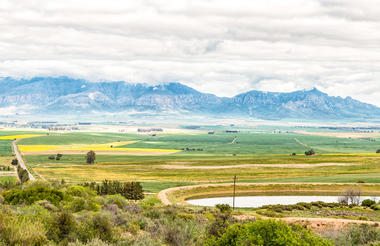
Namaqualand presents us with our first experience of the desert vistas that will accompany us in the days ahead. We continue our journey north and travel to our camp on the banks of the Orange River. If you are fortunate enough to be travelling in the spring months (July to September) you may encounter the wild flowers that have made this region famous. Crossing the border this afternoon we enter Namibia and settle in on the banks of the Gariep River.



While the Orange River was named after the Dutch royal House, in recent times it has been referred to by its original name of Gariep, which simply means “river” in the indigenous KhoeKhoe language. Beginning its journey in the mountains of Lesotho the Orange River is the longest river in South Africa and offers a unique contrast to the desert landscapes along its banks. The best way to experience the river is by getting out on the water and this morning we have the opportunity to join an optional canoe trip on the river. Venturing north into the desert, we visit the Fish River Canyon in the afternoon and overnight at the hot springs of Ais-Ais where you can indulge in a hot water swim under the desert skies.



Every journey has some long travelling days and today is one of those as we venture deeper into the Namib Desert. Our destination is the dune fields that cover the western reaches of the desert. Long dusty roads and sparsely populated farmlands offer us an insight into the vastness of rural Namibia. From the grasslands in the east to the red dunes of the west the slowly changing landscapes represents the many faces of this desert country. Our base for the next two nights puts us at the doorstep to this desert wonderland.
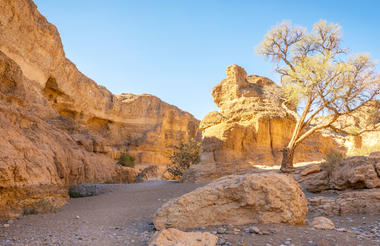
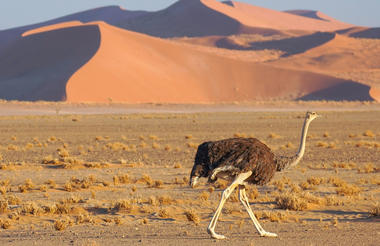
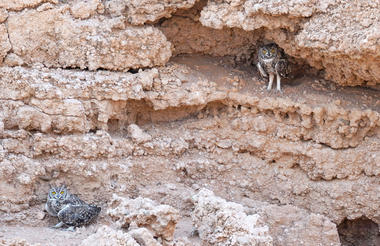
It is a busy day today as we board our open 4x4 vehicles and venture deeper into the Namib Desert, starting off with a transfer into Sossusvlei and Deadvlei. After walking around and discovering this area, we will make a stop at Dune 45, the highest dune in Namibia. The brave amongst us can climb to the top – the views will not disappoint the efforts. As we leave, we will make a short stop at Sesriem Canyon before returning to our accommodation for the night.



Today we continue west and make our way to the coastal town of Swakopmund, where adventure and a dose of civilisation await. After a final excursion into the desert with a local expert, we make our way across the Tropic of Capricorn and continue to the Atlantic coast. We make a brief stop at the Walvis Bay lagoon, hoping to catch a glimpse of the Flamingo’s that feed in the shallows. On arriving in Swakopmund we have the opportunity to book some of the many adventures on offer and enjoy dinner out at a local restaurant.


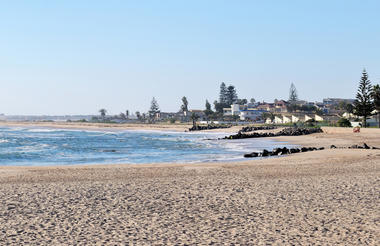
While for many it is the adrenaline fuelled adventures that will grab their attention, Swakopmund offers all that and more. Take the opportunity today to explore the town at your leisure, as there are a number of attractions for every taste. Not to be missed is the selection of famed coffee shops and bakeries that offer a delightful range of German inspired treats. Swakopmund offers all the conveniences of a small city and is the perfect launching pad for the journey through the northern reaches of the land.
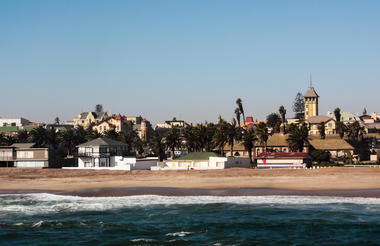
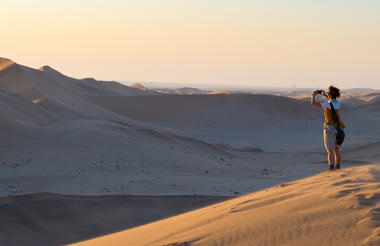
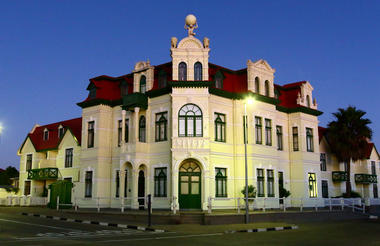
This morning we travel a section of the famous Skeleton Coast road, passing the Salt Works we head north for a photo opportunity in the colourful town of Wlotskasbaken. Lichens are one of the most fascinating examples of symbiosis in nature, algae and fungus unite to form the Lichen and live inseparably as one organism. We will have the opportunity to view these fascinating desert inhabitants before turning east towards Spitzkoppe. These massive granite formations tower 700 metres above the desert plains below and the presence of rock art indicates their significance to the San people who lived here many years ago. We join a local guide for an exploration of these fascinating landforms before completing the journey to our overnight stop in Outjo.
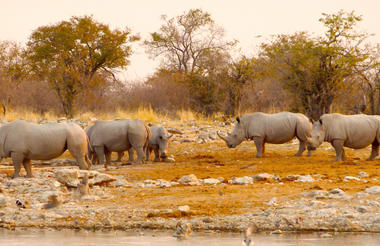
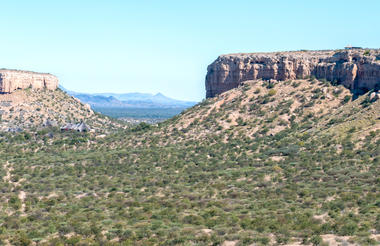
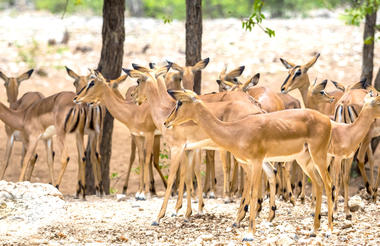
We continue north this morning and on our way we will visit a project that will introduce us to the Himba people of Northern Namibia. The semi-nomadic Himba Tribe are extremely susceptible to Western influence and have lost a large portion of their land to farmers, engineers, miners and many were displaced during the wars that raged between Namibia and Angola. The dwindling number of pastoralists that still exist in their natural environment are protected as far as possible by creating a “buffer zone”, or an “educational tribe” where tourists who would like to get a better understanding of the way of the Himba, their lifestyle and their traditions, can do so without interfering with those still living in their natural environment. Visiting the Himba tribe can be a controversial topic that gets discussed at the camp fire, however not so much if the reason for visiting this particular tribe is understood beforehand. The income that this specific tribe generates from the visits goes towards the education of orphaned Himba children and assists the tribe in giving them a chance to learn about their own culture and heritage. There is a market at the end of your visit, this is a way for the women to establish a small income, used for their own private expenses, and it is up to you whether you’d like to purchase anything or not. We continue to our camp for the night and prepare for two magical days of game viewing in Etosha National Park.
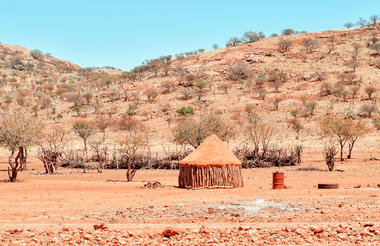
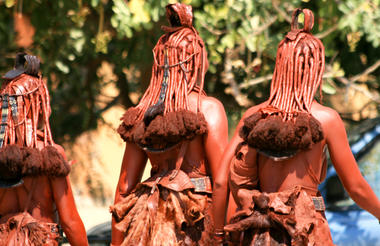
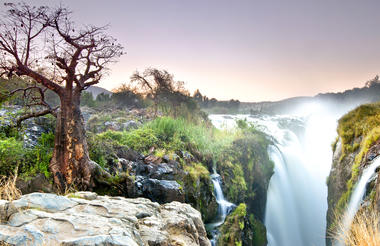
Rising early this morning we make the short drive to the Etosha National Park. Etosha is the venue for some of the most unique game viewing experiences in Africa. Today we have a full-day to explore the edges of Etosha Pan in search of the abundant wildlife that occurs in the park as we spend some time at the many waterholes dotted throughout the park. Our accommodation is situated just outside the National Park.
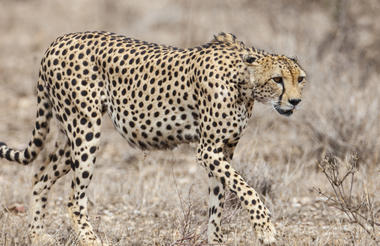
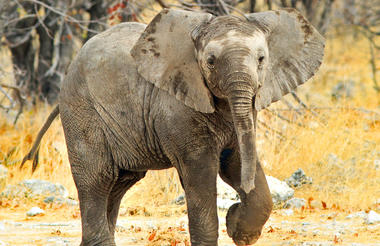
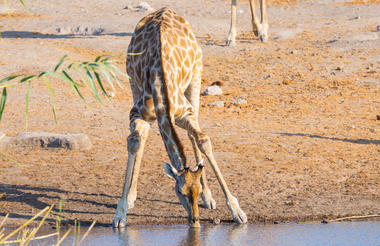
Our second day in Etosha allows another full day to continue our exploration of the park. No day on safari is ever the same and the suspense before that special sighting is the motivation that keeps our eyes wide open.
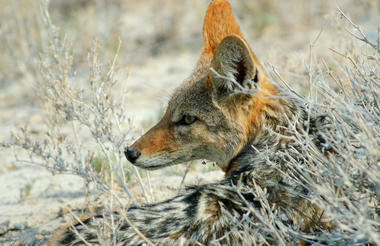
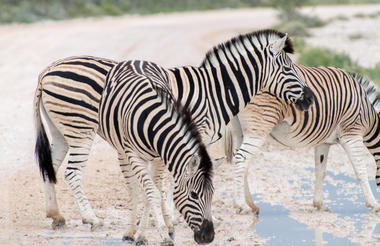
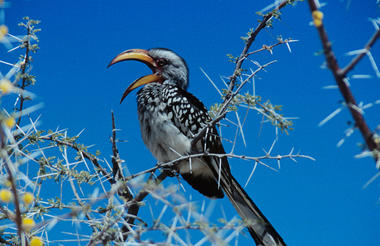
A last early morning and short game drive to the gate sees us wrap up our visit to Etosha and take aim for Windhoek, the capital city of Namibia. Today we make a brief stop at the craft markets of Okahandja before arriving in Windhoek in the afternoon. We will take a short walk through the city centre and have the opportunity to view some its better known landmarks. Although your tour ends upon arrival in Windhoek, we recommend you book post tour accommodation tonight and join your fellow travellers at Windhoek’s most famous eatery, Joe’s Beer House, which has gained an international reputation for its venison dishes and quirky atmosphere.




